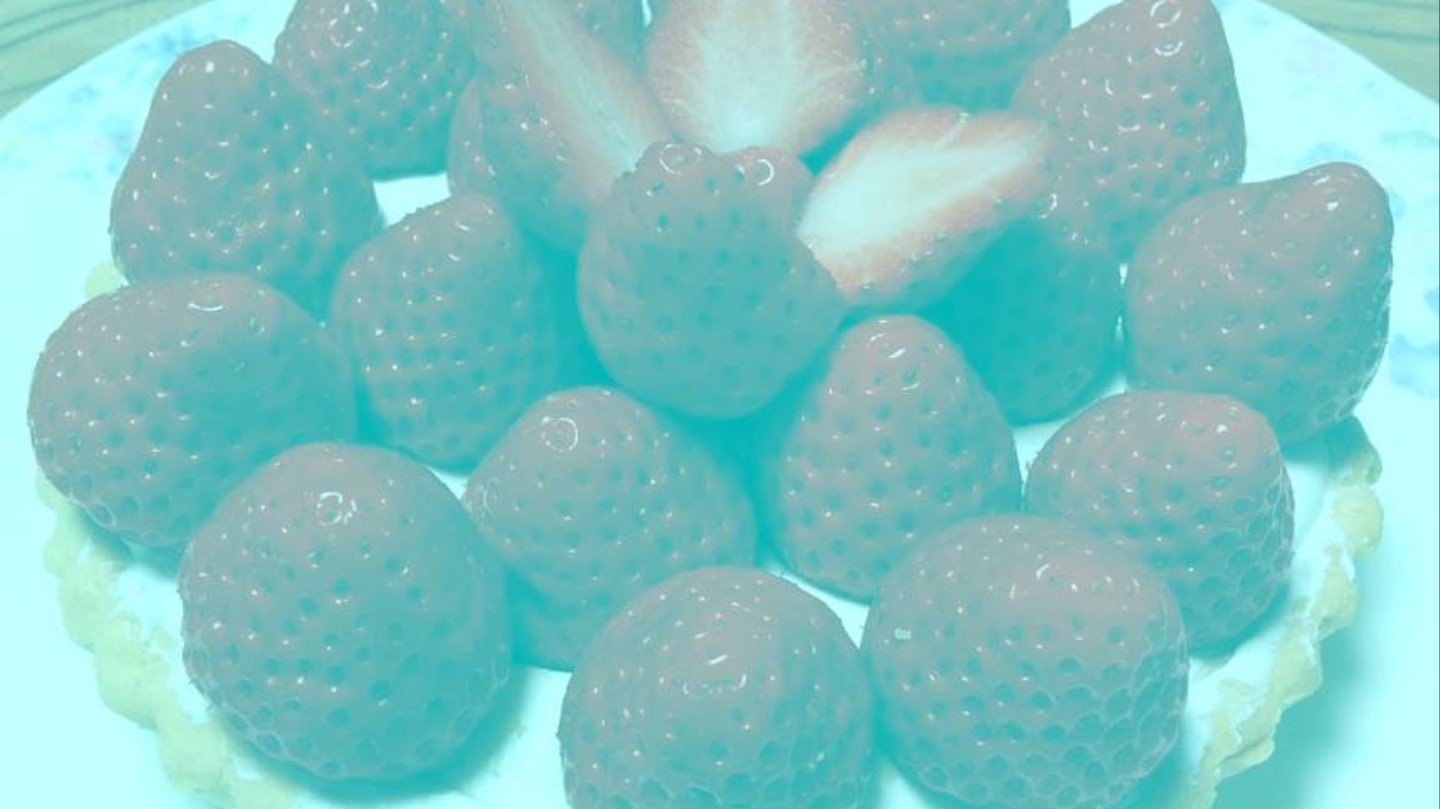A lot of people have probably, via Facebook friends or whatever, seen the photo of strawberries at left, whose production is described here.
I haven't actually opened the picture in Photoshop, but I'll take at face value the claim it has no red pixels.
But, what does that actually mean?
Photoshop's default on color pictures is to present a photo in "RGB" format. That's Red, Green, and Blue — the three primary colors. But, many Photoshop commands let one manipulate not only those three colors, but the three commonly accepted secondary colors of Cyan, Magenta and Yellow, plus a channel for Black. If you've ever heard of CMYK (B already used for Blue) photo editing, that's where it comes from. The Black channel is necessitated by the conversion of primary colors back to secondary.
Anyway, back to RGB colors. Several thoughts here.
First, many colors, even in "normal lighting," whatever that is, aren't what we think. If you use Photoshop much, you'll see that the "green" in grass is about one-third yellow.
Second, does Photoshop's 256-bit format for each color channel imply a level of digital accuracy that doesn't exist? I mean, we can peg light to 500 nanometers. But, is that blue or is that cyan, or turquoise, if we use a non-technical color, or what? Wiki has a full piece on "spectral color" which raises such issues.
And, with that, we're into various issues of philosophy.
Setting aside some aspects of epistemology, we've got what would be either informal logic or linguistic philosophy, first. That is the issue of categories and definitions.
Per what I posted above, where does one color "stop" and another "begin"? That's not a science issue, that's a philosophy issue.
We also have linguistic philosophy issues on how one defines color. Setting aside the Sapir-Whorf hypothesis, which is nonetheless of a certain degree of strength, some languages distinguish between more colors than others. Isaac Newton, with the rainbows produced by his prism, famously distinguished indigo as a seventh color of the spectrum.
To the degree the above photo is an optical illusion, it trades on something else which is related to epistemology, and to David Hume's project of empiricism. That is the idea of qualia, or why do things seem to be the way they are.
The idea of qualia, if accepted in one of its several forms and definings, undercuts the "blank slate" idea of human perception stressed by Hume, and to fair degree by fellow empiricists. A child old enough to point to a red splotch in normal light, when shown this picture above, would not be able to point to claim it has a color similar to that red splotch on the blank slate theory of the human mind. (I frame the example this way to try to bracket the issue of the baby's mind being "contaminated" by explicit written or oral conversation.)
As to opponents of the idea of qualia? As I've gotten older, and more read in modern philosophy, I find Dan Dennett's arguments more and more lacking. The more and more we do current research in robots, artificial intelligence and similar, the more and more we realize human minds don't work that way. Dennett's other objections are somewhat functionalist in nature.
A side issue is that discussions of qualia often get wrapped up with issues of ontological dualism, even though in reality the two are separate items.
There is no logically necessary reason to invoke ontological dualism to explain qualia. That's doubly the case if one understand consciousness and the mind through the lens of embodied cognition and not Dennett's crudely mechanical and scientism-driven computer models.
Let's take this in terms of color. My cone cells in my eye may have slightly different wavelength sensitivities than yours. My optic nerve neurons may respond slightly differently to my cone cell impressions than your neurons do to your cone cells. That's a thumbnail on embodied cognition and color.
Next, let's head to psychology.
If your father, or mother, was a firefighter, your "suchness" of the color red will be far different than mine, at least if their fire department still uses traditional fire-engine red colored vehicles.
Or, as an adult, let's take yellow. If you're a salesperson for French's, as in French's mustard, your "suchness" for yellow will be different than mine if I'm a salesperson for Dole banana. Or for Sunkist, and Sunkist lemons.
This is a slice of my philosophical, lay scientific, musical, religious skepticism, and poetic musings. (All poems are my own.) The science and philosophy side meet in my study of cognitive philosophy; Dan Dennett was the first serious influence on me, but I've moved beyond him. The poems are somewhat related, as many are on philosophical or psychological themes. That includes existentialism and questions of selfhood, death, and more. Nature and other poems will also show up here on occasion.
Thursday, March 09, 2017
"What color are these strawberries?" is ultimately a philosophical question, not scientific
Labels:
Philosophy,
Philosophy of mind
Subscribe to:
Post Comments (Atom)


No comments:
Post a Comment